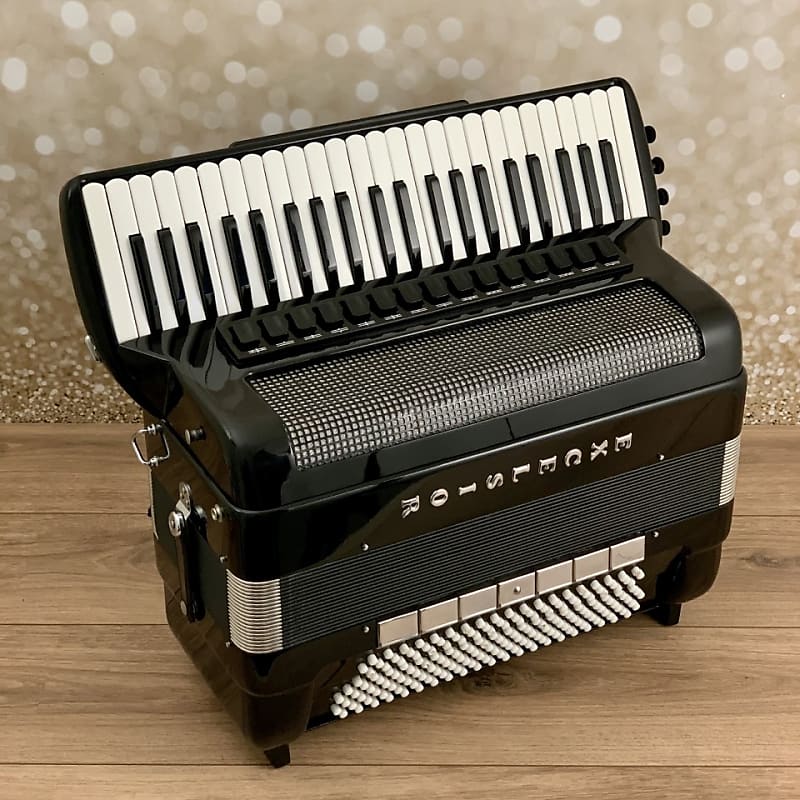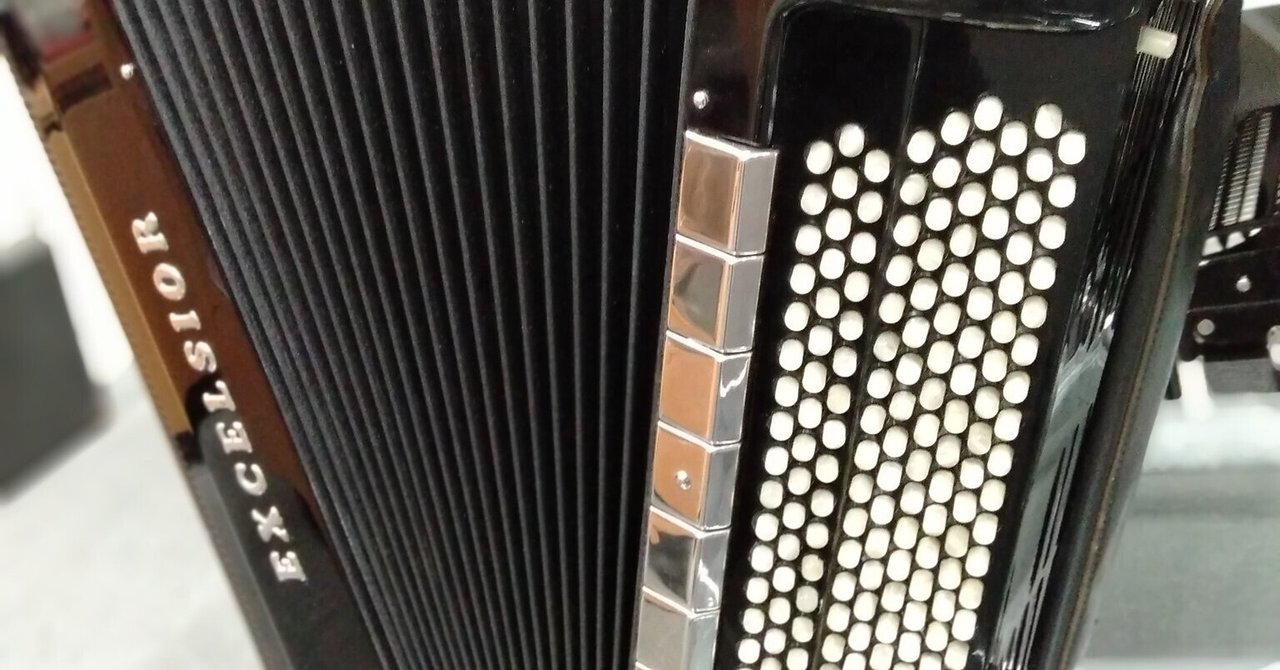Hi All,
I am trying to understand a bit more about the history of the Exscelsior brand and its transformations over the years.
Perhaps, someone can share a link to an article about the history of the company? Or just help with your knowledgeable comments?
I understand that the original Excelsiors were the SAABs of the accordion world - so good and completely resistant to any idea of quality reduction via cost cutting, that they just had to go bust. From what I've gathered by reading various internet forum posts, there were two big changes:
(1) Pigini have acquired the company at some point in 1980s and moved the assembly into Europe from the US (?), but kept operating it as a separate subsidiary (?) integrated into Pigini raw materials chain, and
(2) Pigini have completely dissolved the company and fully merged the Excelsior production into their mainstream some time around 2000, effectively snapping "Excelsior" badges onto almost standard Pigini boxes(?).
In regard to the Pigini acquisition, in what year did it happen? As far as I understand, Pigini were far from being the underdog in the accordion production, had little to no outsourcing at the time, and, if they kept the Excelsior line manufacturing separately, how bad could the impact of the acquisition have been? Is it just the case of hurt national pride, as an all-American Excelsior (about as American, as driving a chevy to the levy that turns out to be dry) became "yet another Italian box", and the accordions therefore were not nearly as good as "in the good old days"?
Or were there significant changes, e.g. completely different voices, complete box design change, with wide use of Pigini elements for internals, abysmal deterioration of assembly quality?
I couldn't find much info on 1980s-2000s accordions made under Pigini-Excelsior at all.
The Morino story is also a bit unclear: At some point Hohner have outsourced the Morino manufacturing to Excelsior, but was it before or after the Pigini acquisition? There seem to be similar notes of hurt national pride, as an all-German Hohner (about as German as weissbier spilled on lederhosen at Oktoberfest) has suddenly become "yet another Italian box", and the accordions therefore were not nearly as good as "in the good old days".
If the outsourcing happened before Pigini, then the manufacturing would have been carried out by the "true" world-leading Excelsior company, which makes the various quality reduction claims highly suspicious.
Even if the manufacturing was moved over after Pigini acquisition, it appears that they were top of the line, as Excelsior's flagship 980 model seems to be a twin brother of the Morino, according to, for example, this old ad, describing it as "Morino is Excelsior jacket":

 reverb.com
reverb.com
Here, the article suggests year 1983 as the first one for 980 manufacturing: Pre or post Pigini?

 note.com
note.com
I remember reading debra's comments that when compared side by side, the Morino and the 9** Excelsior felt like two completely different instruments, despite being, supposedly, clones of each other, but even if made by Pigini, they would have been close to the top of the line model of a premium range made by one of the world leading manufacturers? Could they objectively have been worse than a pre-war Hohner with a wooden keyboard?..
Is there any information on what voices were used originally, under Pigini, and in Morino models?
Thank you for any input.
I am trying to understand a bit more about the history of the Exscelsior brand and its transformations over the years.
Perhaps, someone can share a link to an article about the history of the company? Or just help with your knowledgeable comments?
I understand that the original Excelsiors were the SAABs of the accordion world - so good and completely resistant to any idea of quality reduction via cost cutting, that they just had to go bust. From what I've gathered by reading various internet forum posts, there were two big changes:
(1) Pigini have acquired the company at some point in 1980s and moved the assembly into Europe from the US (?), but kept operating it as a separate subsidiary (?) integrated into Pigini raw materials chain, and
(2) Pigini have completely dissolved the company and fully merged the Excelsior production into their mainstream some time around 2000, effectively snapping "Excelsior" badges onto almost standard Pigini boxes(?).
In regard to the Pigini acquisition, in what year did it happen? As far as I understand, Pigini were far from being the underdog in the accordion production, had little to no outsourcing at the time, and, if they kept the Excelsior line manufacturing separately, how bad could the impact of the acquisition have been? Is it just the case of hurt national pride, as an all-American Excelsior (about as American, as driving a chevy to the levy that turns out to be dry) became "yet another Italian box", and the accordions therefore were not nearly as good as "in the good old days"?
Or were there significant changes, e.g. completely different voices, complete box design change, with wide use of Pigini elements for internals, abysmal deterioration of assembly quality?
I couldn't find much info on 1980s-2000s accordions made under Pigini-Excelsior at all.
The Morino story is also a bit unclear: At some point Hohner have outsourced the Morino manufacturing to Excelsior, but was it before or after the Pigini acquisition? There seem to be similar notes of hurt national pride, as an all-German Hohner (about as German as weissbier spilled on lederhosen at Oktoberfest) has suddenly become "yet another Italian box", and the accordions therefore were not nearly as good as "in the good old days".
If the outsourcing happened before Pigini, then the manufacturing would have been carried out by the "true" world-leading Excelsior company, which makes the various quality reduction claims highly suspicious.
Even if the manufacturing was moved over after Pigini acquisition, it appears that they were top of the line, as Excelsior's flagship 980 model seems to be a twin brother of the Morino, according to, for example, this old ad, describing it as "Morino is Excelsior jacket":

Excelsior Mod. 980 Black 45 Keys + Freebass | Reverb UK
Excelsior Mod. 980Worldwide deliveryIn very good condition for demanding classical players. The Hohner Morino VI in a jacket of Excelsior during the time when the Morino was build by Excelsior. Although it's not a lightweight, it's a heavyweigt in producing sound.All our used accordions have had ...
Here, the article suggests year 1983 as the first one for 980 manufacturing: Pre or post Pigini?

【中古】Excelsior 980|アコーディオン横丁
実はエキセルシァーにもフリーベース仕様の機種があったりします。 右手はピアノ式鍵盤、左手側はスタンダードベースとフリーベースが両方付いているアコーディオンです。 【中古】Excelsior 980 45鍵(E〜C) ダブルチャンバー装置付き スタンダードベース:127音 フリーベース:58音(E~C#) HMMMLリード スイッチ鍵盤部14(マスタースイッチ付) ベース部7 マイク付き 15.6kg アコーディオンにつけられる機能をこれでもか!と搭載した全部乗せな一台。ここまでくるともはやオルガンに近い音色になります。 一般的なアコーディオンは、持ち運びができることや簡易
 note.com
note.com
I remember reading debra's comments that when compared side by side, the Morino and the 9** Excelsior felt like two completely different instruments, despite being, supposedly, clones of each other, but even if made by Pigini, they would have been close to the top of the line model of a premium range made by one of the world leading manufacturers? Could they objectively have been worse than a pre-war Hohner with a wooden keyboard?..
Is there any information on what voices were used originally, under Pigini, and in Morino models?
Thank you for any input.
Last edited:


